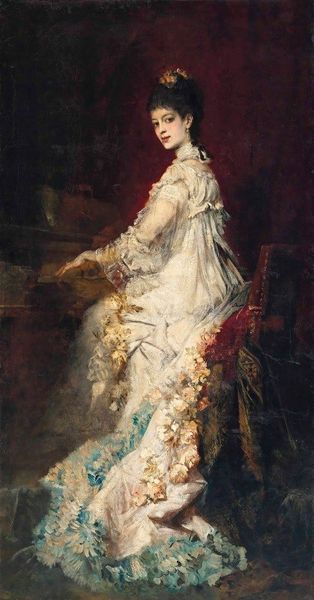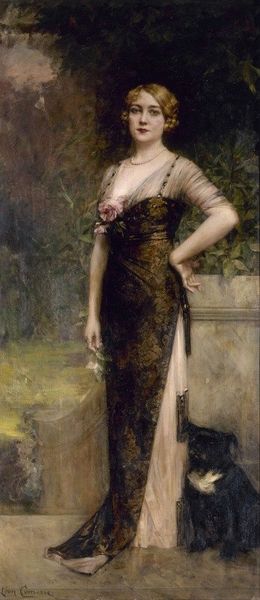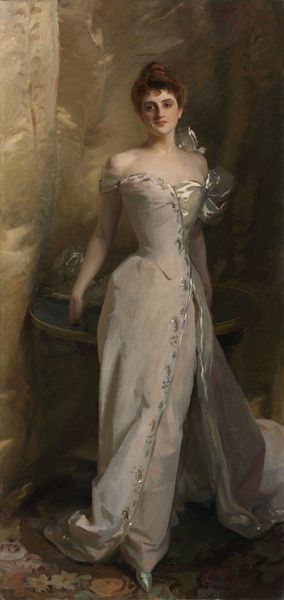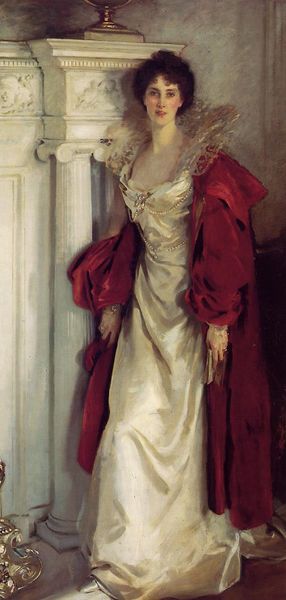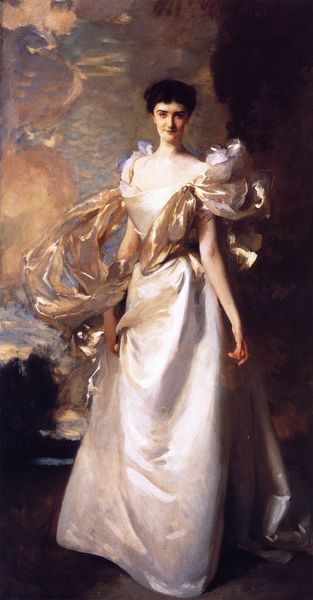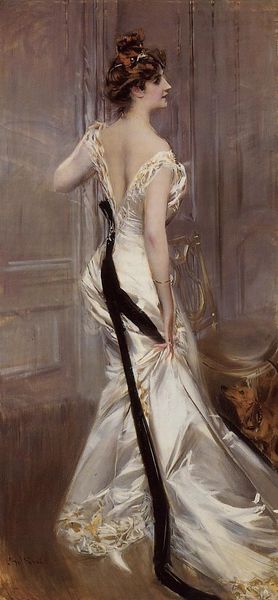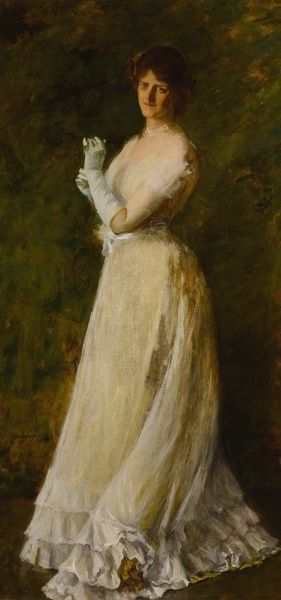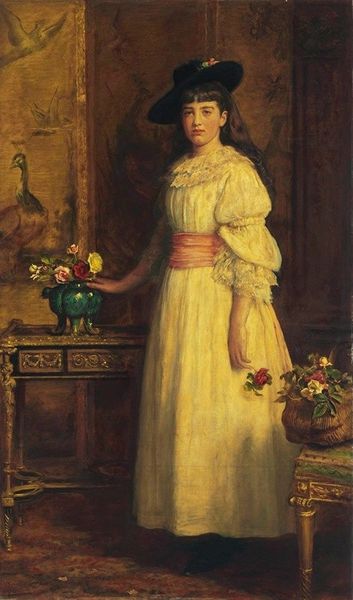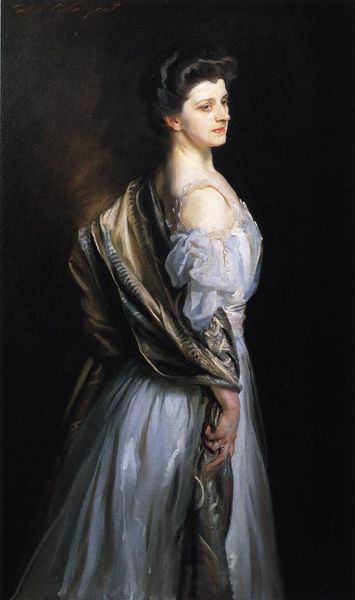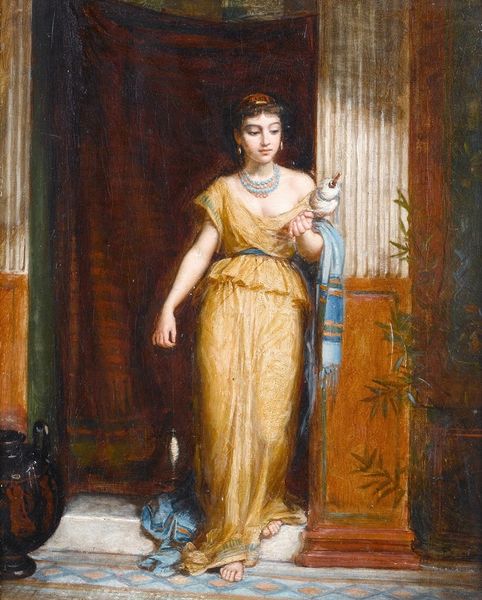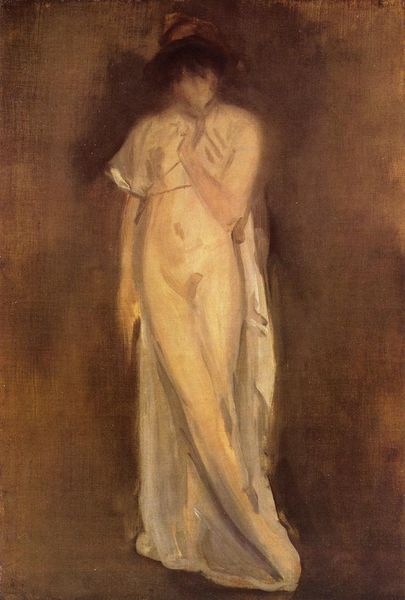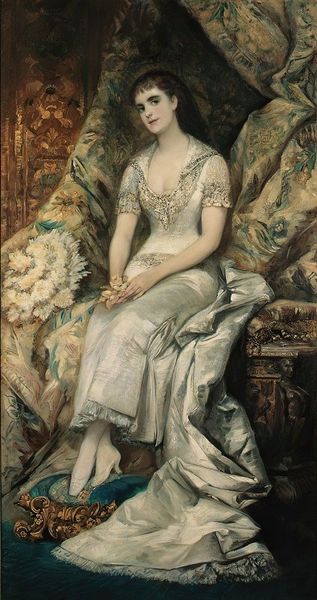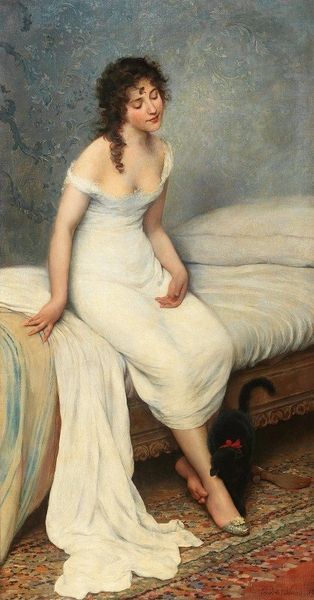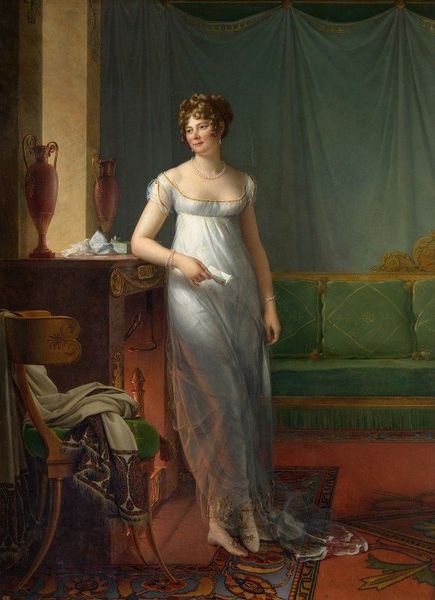
Copyright: Public Domain: Artvee
Curator: Here we have James Jebusa Shannon's oil painting, "Nora McMullen Mellon," created in 1910. It strikes me as a fairly straightforward society portrait from the era. Editor: It's so much more than that. At first glance, I see a representation of early 20th century femininity – a soft elegance undercut by what appears as stoicism, perhaps a commentary on the limited agency women of the upper class faced despite their apparent privilege. Curator: You're looking into the sitter's supposed mindset; I tend to wonder what the application of paint signifies here. Shannon's brushwork is visible, almost celebrated, creating texture, particularly in the rendering of the fabric. This "impasto," as they say, breaks from the pure tradition of high art that strives for realism and elevates labor, acknowledging the artist's hand, if you will. Editor: Precisely! And the rose she delicately holds seems to be a loaded symbol. The ephemeral nature of beauty, a subtle protest against the objectification she inevitably experiences as a woman displayed. It hints at an awareness of social constraints of beauty she exists within. Curator: Yes, that detail is compelling. Speaking of "display," observe how the gold color itself seems almost luxurious, probably fabricated for the wealthier customers of that era. Considering the social status of the Mellon family, there's clearly a consumer context intertwined within its aesthetic appearance. How interesting the painting materials function as signifiers of class and social standing. Editor: Let's consider the fountain to the background. This wasn't just an innocent setpiece. Water, especially within manicured landscapes, was often symbolic of status, but also of a woman's nature. How the male artist perceived their identities within restrictive social settings. The portrait, in essence, perpetuates both the beauty standards and social critique we would find today. Curator: The act of applying oil paint, in such a robust fashion, allows for this interpretation, almost. As someone engaging with art's tangible aspects, these visible marks demonstrate the social and physical realities within the process. This impasto could represent how we create a more complex portraiture about that woman. Editor: Seeing the work in this way allows the painting to transcend a pretty picture to one of social, economic, gender discourse of early twentieth century art. Curator: Fascinating how observing the art's manufacture informs how to read the woman in front of the landscape. Editor: Precisely. I believe our talk invites further analysis and opens up a discussion of intersectionality within portraits, far past the beautiful facade of the artworks.
Comments
No comments
Be the first to comment and join the conversation on the ultimate creative platform.
